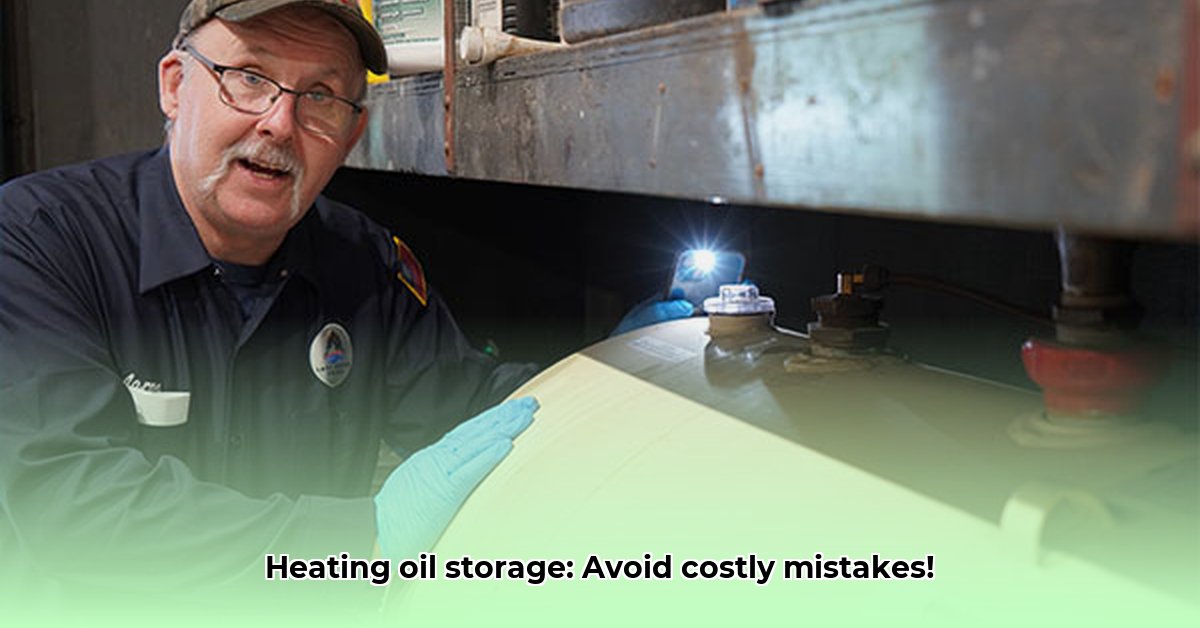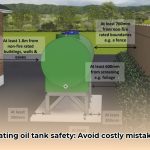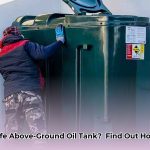Keeping heating oil storage safe and legal doesn’t have to be complicated. This guide breaks down the essentials, covering everything from aboveground to underground tanks. You’ll learn the rules, safety tips, and how to avoid costly mistakes, ensuring your property and the environment are protected. For more information on professional installation, see this guide.
Navigating Heating Oil Tank Regulations
Storing heating oil safely and legally is paramount, preventing environmental harm and costly penalties. Understanding your responsibilities is crucial. Let’s explore the key aspects of heating oil storage regulations.
Aboveground vs. Underground Tanks: Regulatory Differences
Regulations differ significantly based on whether your tank is aboveground (AST) or underground (UST). Underground tanks face stricter rules due to the difficulty in detecting leaks, which can contaminate groundwater. Aboveground tanks, while easier to monitor, still require careful management. Knowing your tank type is the essential first step in understanding compliance. Understanding the variations between these tank types is essential for proper adherence to guidelines and regulations.
- Underground Storage Tanks (USTs): Subject to stringent federal and state regulations due to the potential for undetected leaks to contaminate soil and groundwater. These regulations often include requirements for leak detection systems, corrosion protection, and financial responsibility.
- Aboveground Storage Tanks (ASTs): While easier to monitor, ASTs are still subject to regulations aimed at preventing spills and releases. These regulations often focus on spill prevention, control, and countermeasures (SPCC) plans, as well as tank construction and maintenance standards.
Federal Regulations: The EPA’s Role in Oil Storage
The Environmental Protection Agency (EPA) sets national standards, primarily under 40 CFR Part 112. These standards emphasize spill prevention, control, and cleanup. A crucial element is the Spill Prevention, Control, and Countermeasure (SPCC) plan, detailing how you’ll prevent, contain, and clean up oil spills. Think of it as your comprehensive oil spill emergency plan.
The EPA’s regulations also outline specific requirements for:
- Tank design and construction
- Leak detection and monitoring
- Spill prevention and control measures
- Facility inspections and record-keeping
- Spill response and cleanup procedures
State and Local Regulations: Tailoring Compliance to Your Location
Federal rules serve as a baseline. States and cities often impose additional regulations that may vary widely. These local laws can cover tank size limits, distance from property lines, and installation specifications. Always consult your state and local environmental agencies for area-specific rules. Local regulations can lead to significant fines if ignored.
Examples of state and local regulations may include:
- More stringent tank testing requirements
- Specific setback distances from buildings and property lines
- Mandatory secondary containment for ASTs
- Requirements for financial assurance to cover cleanup costs
Practical Steps for Safe Oil Storage and Compliance
Maintaining safe and legal heating oil storage involves several key steps:
- Regular Inspections: Early detection prevents bigger issues. Regularly inspect tanks for leaks, rust, and damage. The frequency depends on tank age and type, but annual checks are vital. Look for signs of corrosion, dents, or other physical damage. Check for leaks around fittings, valves, and piping.
- Preventative Maintenance: A well-maintained tank minimizes leaks. Address rust, replace worn parts, and ensure proper ventilation. Neglecting maintenance can lead to costly repairs and environmental risks. This includes cleaning the tank periodically to remove sediment and sludge, which can contribute to corrosion.
- Spill Prevention: Proper tank placement is vital, often requiring secondary containment to catch leaks. Your SPCC plan should detail spill response procedures. Consider installing overfill protection devices to prevent spills during delivery.
Tank Size and Exemptions: Understanding the Rules
Larger commercial facilities face stricter regulations, while smaller residential tanks may have exemptions. However, safety remains paramount. Compliance with local fire codes and safety standards is generally required, regardless of tank size. Always verify with local authorities.
- Residential Tanks: Generally, tanks under 1,100 gallons used for heating single-family residences may be exempt from certain federal regulations. However, state and local rules often apply.
- Commercial Tanks: Commercial facilities storing larger quantities of heating oil are subject to more comprehensive regulations, including SPCC plan requirements and regular inspections.
Risks of Non-Compliance: Environmental and Financial Impacts
Heating oil tank leaks cause significant environmental damage and expensive cleanup costs. Soil and groundwater contamination is harmful and can be financially devastating. Understanding these risks makes compliance critical. Addressing these concerns proactively can save you money and protect your property from future issues.
Potential consequences of non-compliance include:
- Fines and penalties from regulatory agencies
- Cleanup costs for contaminated soil and groundwater
- Third-party liability for damages to neighboring properties
- Loss of property value
- Legal action
Risk Assessment: A Framework for Evaluating Your Situation
Assessing potential problems and their impact is crucial:
| Factor | Likelihood of Problem | Severity of Problem | Overall Risk Level | Ways to Reduce the Risk |
|---|---|---|---|---|
| Tank Age and Condition | High | High | Very High | Regular inspections; replace old, damaged tanks promptly. |
| Poor Installation | Medium | Medium | Medium | Professional installation following all guidelines. |
| Inadequate Spill Prevention | Medium | High | High | Implement a strong SPCC plan and emergency response procedures. |
| Poor Maintenance | Medium | Medium | Medium | Regular checks and preventative maintenance are critical. |
| Lack of Operator Training | Low | High | Medium | Provide comprehensive training to personnel. |
| Inadequate Record Keeping | Low | Medium | Low | Maintain accurate and up-to-date records. |
Proactive Compliance: Protecting Your Investment and Environment
Complying with heating oil storage regulations protects your property, neighbors, and the environment. Proactive measures, like regular inspections and maintenance, are the best approach. Peace of mind comes from knowing you’ve taken necessary steps to protect yourself and your surroundings.
Ensuring Aboveground Oil Tank Compliance Across Varying State Regulations
Different states possess different regulations, thus ensuring compliance can present challenges for homeowners and businesses. Understanding these differences is crucial for maintaining a safe and compliant storage system.
Navigating the Regulatory Maze in Oil Storage
While the EPA sets national standards, states often impose more stringent requirements. Ensuring compliance across state regulations requires a multi-step approach. Identify all applicable local, state, and federal regulations, potentially involving consultation with your state’s environmental agency or legal counsel specializing in environmental compliance. Neglecting this step can lead to serious penalties.
- Research: Consult state environmental agency websites, local government offices, and industry associations.
- Professional Advice: Engage environmental consultants or legal experts specializing in environmental compliance for guidance.
Key Steps to Compliance With Regulations
Following these steps will assist you in meeting the diverse requirements:
- Inventory Your Tanks: Identify all aboveground oil tanks. Note their size, age, and contents.
- Determine Applicable Regulations: Research federal and state regulations. Note storage capacity limits, secondary containment requirements, and inspection schedules.
- Implement a Spill Prevention Plan: Outline prevention procedures, containment strategies, and cleanup methods. Ensure the plan is accessible to responders. This includes designating a spill response coordinator and maintaining an inventory of spill cleanup equipment.
- Secondary Containment: Ensure adequate containment like concrete pads or catch basins to prevent environmental spills. Requirements vary by jurisdiction. The containment should be able to hold the entire contents of the largest tank plus sufficient freeboard for precipitation.
- Regular Inspections and Maintenance: Inspect for corrosion and leaks. Conduct routine maintenance to maintain optimal condition, preventing costly repairs and environmental damage. Keep detailed records of all inspections and maintenance activities.
- Operator Training: Train personnel on safe handling, spill response, and emergency procedures. Training should be documented and updated regularly.
- Record Keeping: Maintain inspection, maintenance, and incident records to demonstrate regulatory compliance. Records should be readily available for inspection by regulatory agencies.
Common Pitfalls and Solutions in Oil Storage
Defining “aboveground” versus “buried” or “bunkered” tanks can be challenging. Inconsistent storage capacity definitions across states can further complicate compliance. Proactive communication with your state environmental agency is essential to clarify requirements and minimize issues. Engaging a qualified environmental consultant can offer expertise in risk assessment, compliance programs, and navigating regulations.
- Pitfall: Misinterpreting regulatory definitions of “aboveground” versus “buried” tanks.
- Solution: Consult with state environmental agencies or environmental consultants for clarification.
- Pitfall: Failing to account for inconsistent storage capacity definitions across states.
- Solution: Conduct thorough research and seek professional guidance to ensure compliance with all applicable regulations.
The Role of Tech in Upholding Oil Regulations
Emerging technologies aid compliance. Advanced leak detection systems provide early warnings, enabling prompt action. Remote monitoring systems offer real-time data, reducing site visits. Investing in these solutions improves safety and compliance.
- Leak Detection Systems: Early warning of leaks, minimizing environmental damage and cleanup costs.
- Remote Monitoring Systems: Real-time data on tank levels, temperature, and pressure, enabling proactive maintenance and preventing spills.
- Geographic Information Systems (GIS): Mapping and tracking of tank locations, facilitating regulatory compliance and emergency response.
Key Takeaways:
- Comply with all relevant
- Unlock Your Future: Community Colleges in Florida with Childhood Education Programs – Your Affordable Path - September 14, 2025
- Unlock Futures: Catawba College Growth Strategy Insights 2025 - September 14, 2025
- Your Complete Guide to Eastfield Community College | 2025 Programs & Insights - September 14, 2025

![Fast Track Your Legal Career: Broome Community College Paralegal Studies AAS [2025 Guide] broome_community_college_paralegal_studies_edited](https://baufinanzierung-ausland.de/wp-content/uploads/2025/08/broome_community_college_paralegal_studies_edited-150x150.jpg)














